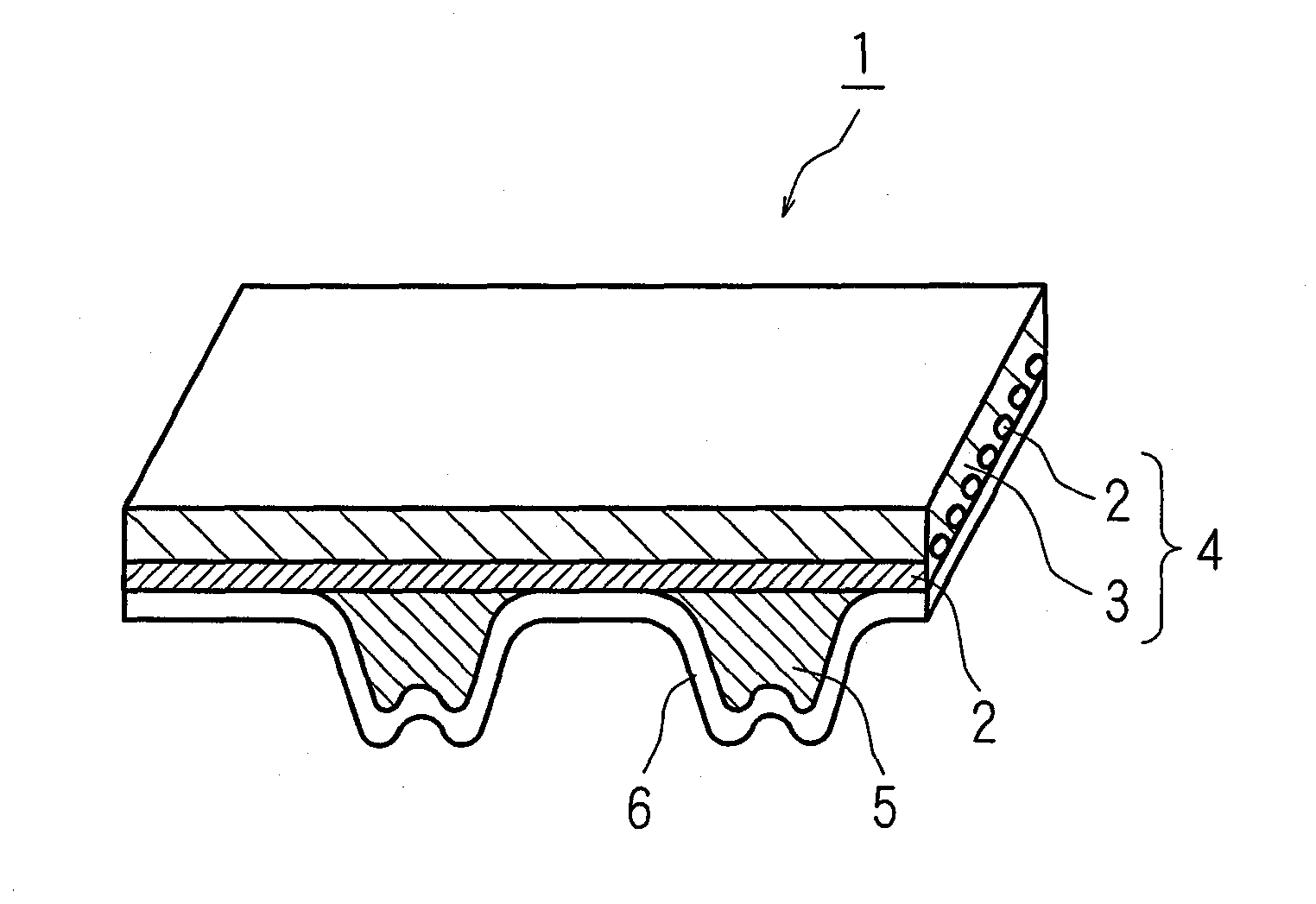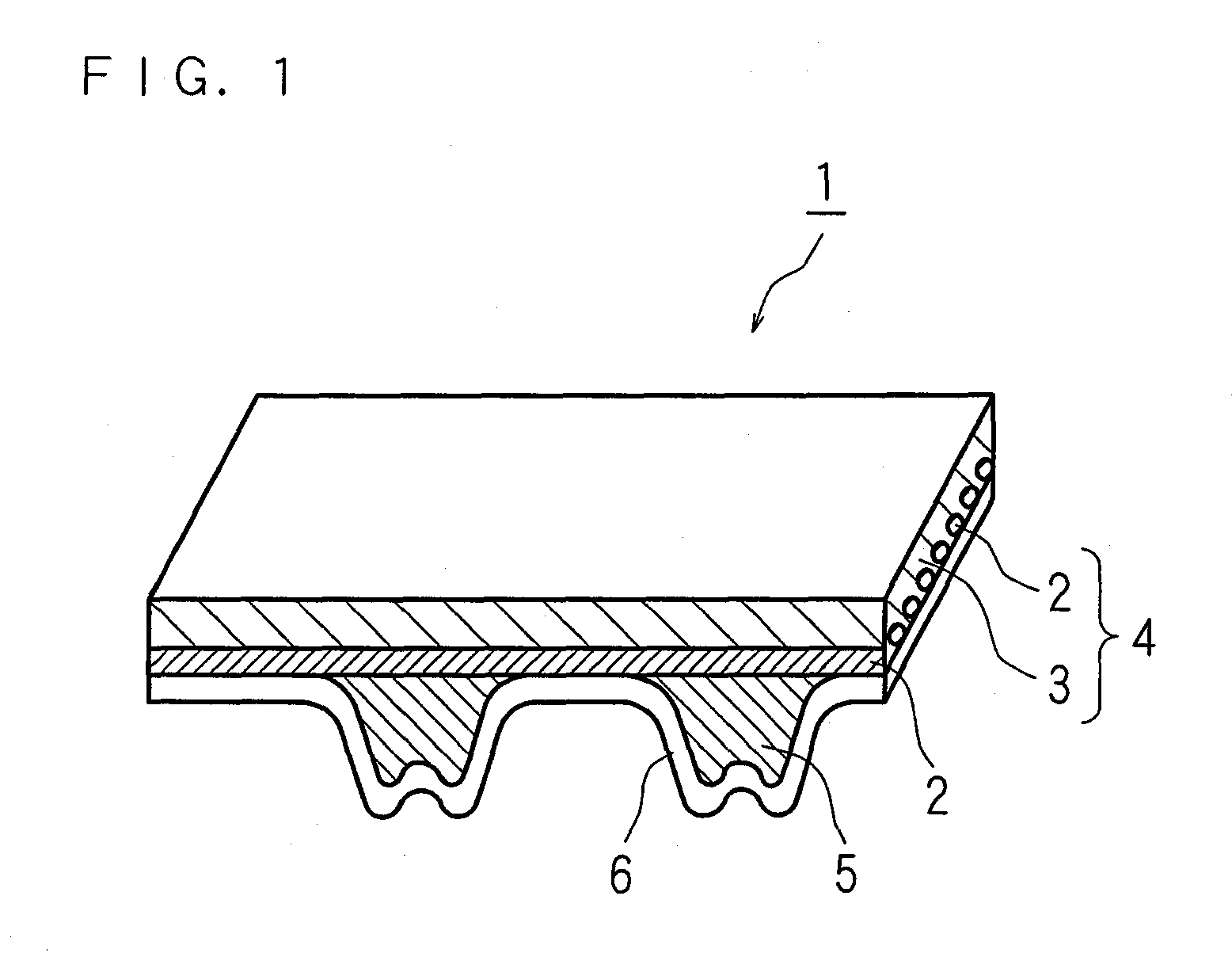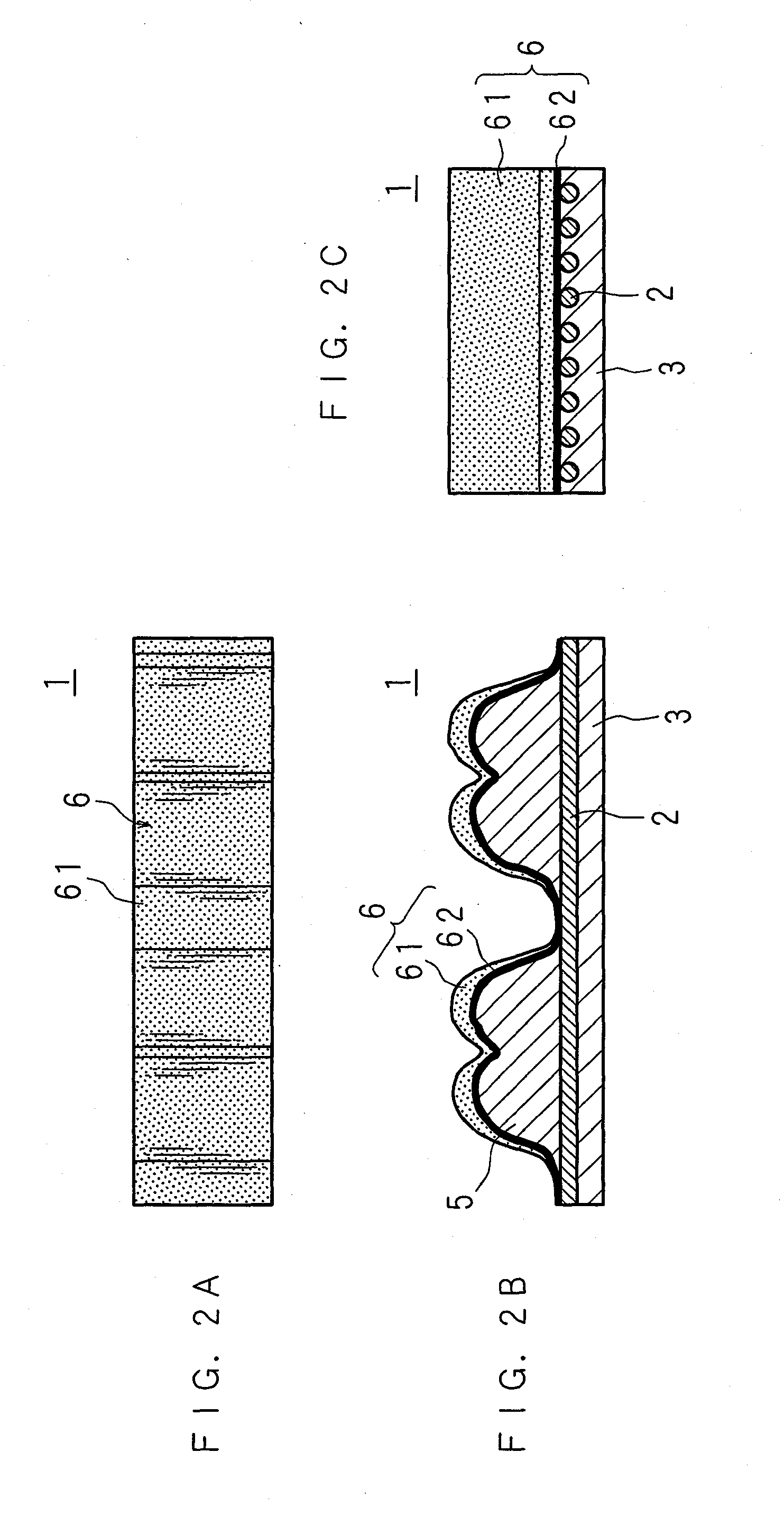Toothed belt
a belt and tooth technology, applied in the direction of driving belts, v-belts, mechanical equipment, etc., can solve the problems of reduced low temperature resistance, increased starting torque in cold climate areas, and inability to use toothed belts, so as to achieve favorable rigidity, high rigidity, and improved adhesion.
- Summary
- Abstract
- Description
- Claims
- Application Information
AI Technical Summary
Benefits of technology
Problems solved by technology
Method used
Image
Examples
blending example 1
[0128]In accordance with a blending example (indicated by parts by mass) illustrated in Table 1 below, the rubber layer composition of Blending example 1 was obtained by blending the following substances: HNBR (1) (“Zetpol (registered trademark) 2010H” produced by ZEON CORPORATION); an HNBR / zinc methacrylate polymer alloy (polymer alloy) (1) (“Zeoforte ZSC2295N” produced by ZEON CORPORATION); titanium oxide (“titanium oxide R-62N” produced by Sakai Chemical Industry Co., Ltd. [white pigment]); a plasticizer (“ADK CIZER C9N” produced by ADEKA CORPORATION [adipic acid polyester]); a cross-linking agent (“Perkadox 14 / 40C” produced by Kayaku Akzo Corporation [1,3-bis(t-butylperoxyisopropyl)benzene (40%)+calcium carbonate]); a co-cross-linking agent (“VULNOC PM” produced by OUCHI SHINKO CHEMICAL INDUSTRIAL CO., LTD. [phenylenedimaleimide]); an age resister (“NAUGARD 445” produced by Shiraishi Calcium Kaisha, Ltd. [amine age resister], and “NOCRAC MBZ” produced by OUCHI SHINKO CHEMICAL IN...
blending example 2
[0130]The rubber layer composition of Blending example 2 was obtained similarly to that of Blending example 1 except that a polymer alloy (2) (“ZSC4195CX” produced by ZEON CORPORATION) was blended instead of the polymer alloy (1). A base polymer for “ZSC4195CX” is “Zetpol 4310” having the following physical properties: a binding acrylonitrile content of 18.6 mass percentage, an iodine value (central value) of 15 mg / 100 mg, and a Mooney viscosity of 80. “ZSC4195CX” has the following physical properties: a Mooney viscosity of 75 and a JIS hardness (shore D) of 95 (60).
blending example 3
[0131]The rubber layer composition of Blending example 3 was obtained similarly to that of Blending example 2 except that the mixed content of the HNBR (1) was 10.0 parts by mass instead of 15.0 parts by mass, and 5 mass parts of hydrogenated carboxyl NBR (“Therban XT” produced by LANXESS K.K. CORPORATION) was blended.
PUM
| Property | Measurement | Unit |
|---|---|---|
| particle size | aaaaa | aaaaa |
| specific surface area | aaaaa | aaaaa |
| volume resistivity | aaaaa | aaaaa |
Abstract
Description
Claims
Application Information
 Login to View More
Login to View More - R&D
- Intellectual Property
- Life Sciences
- Materials
- Tech Scout
- Unparalleled Data Quality
- Higher Quality Content
- 60% Fewer Hallucinations
Browse by: Latest US Patents, China's latest patents, Technical Efficacy Thesaurus, Application Domain, Technology Topic, Popular Technical Reports.
© 2025 PatSnap. All rights reserved.Legal|Privacy policy|Modern Slavery Act Transparency Statement|Sitemap|About US| Contact US: help@patsnap.com



